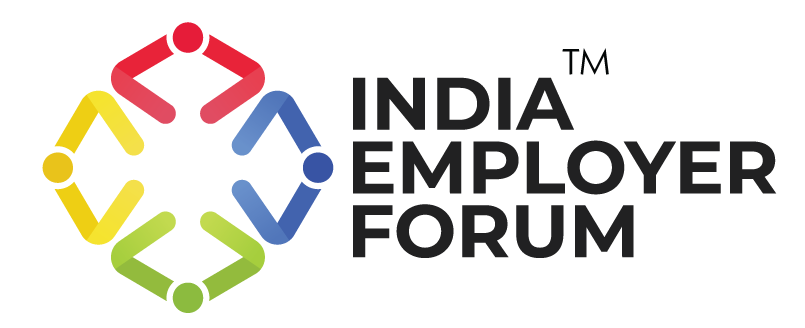While demand for skilled professionals continues to rise across industries like software, gaming, BFSI, and core engineering, organisations are facing growing challenges in retaining top talent. Despite widespread adoption of flexible and hybrid work models, traditional retention levers are losing their effectiveness. The modern workforce now places a premium on meaningful work, growth opportunities, and strong organisational culture elements that go far beyond perks and policies.
Internal mobility offers a powerful, often overlooked solution. It enables employees to shift roles and grow within the company, laterally or vertically, without leaving. In a workplace shaped by evolving expectations, internal mobility helps organisations retain talent, boost engagement, and stay future-ready.
Understanding Internal Mobility in India
Internal mobility refers to the movement of employees within an organization, both vertically and laterally, to explore new career paths, develop skills, and contribute to evolving business needs. It includes promotions, lateral shifts, cross-functional projects, and temporary assignments. By enabling employees to grow within the organization, companies can improve engagement, boost retention, reduce hiring costs, and build a resilient workforce.
There are several key types of internal mobility:
- Vertical mobility: Promotions or upward movement into roles with greater responsibility.
- Lateral mobility: Shifting to a different role at the same level, often across teams or functions.
- Project-based or gig mobility: Temporary assignments or cross-functional projects to meet short-term business needs or support employee development.
- Transfers: Geographical or interdepartmental moves, either permanent or temporary.
Globally, organizations are increasingly leveraging internal mobility to counter talent shortages and retain high-performing employees. In India, however, this strategy remains underutilized. Despite rising attrition rates and a clear demand for talent, especially in IT, BFSI, and manufacturing sectors, many companies still prioritize external hiring. Strengthening internal mobility frameworks offers Indian businesses a powerful, cost-effective way to retain talent and build future-ready teams from within.
Why internal mobility matters in India Today?
Rising attrition in sectors like IT, BFSI, GCCs, and startups is making talent retention a growing concern. Gen Z and millennials, who now make up a significant portion of the workforce, seek continuous growth, not just better pay. At the same time, skill shortages and the high cost of external hiring are pushing companies to rethink traditional talent strategies. Internal mobility offers a timely solution, helping organizations retain top talent, address skill gaps, and build future-ready teams from within.
Key Benefits of Internal Mobility
For Employers:
In a high-attrition environment, retaining experienced talent is crucial to safeguarding institutional knowledge and ensuring business continuity. As hiring challenges persist, organizations are increasingly turning inward, leveraging internal mobility to relieve pressure on talent acquisition and unlock the potential of their existing workforce. When employees see a clear path for growth through promotions, lateral moves, or project-based opportunities, they are more engaged, more productive, and more likely to stay. Internal mobility not only boosts retention but also strengthens succession planning and organizational resilience.
For Employees:
In sectors like startups, BFSI, and IT/ITeS, where retaining senior talent is a growing concern, internal mobility provides a compelling alternative to external hiring. By enabling lateral moves, project-based roles, and mentorship opportunities, companies foster cross-functional skill development and career agility. In today’s evolving workplace, where culture and flexibility are deeply valued, offering visible career growth within the organization strengthens employee loyalty and builds a more resilient, future-ready workforce.
How to Build a Culture of Mobility
Creating a thriving culture of internal mobility starts with a mindset shift from top leadership to line managers. Leaders must view talent as fluid, not fixed, and recognize that encouraging employees to explore new roles within the organization strengthens retention, not weakens it. A clear, transparent career path is crucial as employees need visibility into potential growth opportunities, along with open communication about what it takes to get there. When career development feels like a black box, mobility stalls. To truly embed mobility into the organization, integrate it with existing performance management and learning systems. Link roles to skill requirements and enable employees to access learning paths aligned with their career goals. Finally, equip managers with the tools and training to support mobility conversations. Rather than hoarding talent, managers should act as career enablers, guiding employees to opportunities where they can grow, contribute, and stay engaged.
The Role of Technology
Technology plays a crucial role in enabling effective internal mobility. AI-powered talent marketplaces help match employees with the right internal opportunities based on their skills, interests, and career goals, making the process faster and more personalized. Upskilling platforms integrated with mobility programs ensure employees acquire the skills needed for future-ready roles, bridging skill gaps proactively. Data analytics provide valuable insights by tracking internal talent flows, identifying retention risks, and measuring the impact of mobility initiatives, helping organizations make informed decisions and continuously improve their talent strategies.
Right now, internal mobility is no longer just a ‘nice-to-have’, it’s a strategic imperative. By embracing structured mobility programs, organizations can effectively retain critical skills, reduce costly external hiring, and meet the evolving expectations of a dynamic workforce that values growth and purpose. Building a culture that supports career agility, backed by technology and leadership commitment, will not only boost employee engagement and loyalty but also future-proof businesses in an ever-changing economic environment. Internal mobility truly unlocks untapped potential, turning retention challenges into opportunities for sustainable growth.






